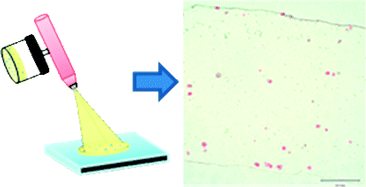Cartilage tissue engineering strategies generally result in homogeneous tissue structures with little resemblance to native zonal organization of articular cartilage. The main objective of our work concerns the buildup of complex biomaterials aimed at reconstructing biological tissue with three dimensional cells construction for mimicking cartilage architecture.
In this first step, our strategy is based on structure formation by simple and progressive spraying of mixed alginate and chondrocytes at different pressures. We report the first demonstration of spraying effect on chondrocytes inside an alginate hydrogel at short (i) and long terms (ii) and the mechanical behavior of a sprayed hydrogel by biomechanical tests (plane strain compression tests).
Our results indicate clearly that during the first days of culture the cells were influenced by the construction method (spraying or molding, control method) with low viability and higher production levels of nitrite. From day 7, the cell behaviors become similar for both methods. Indeed after 28 days of culture, type II collagen was observed, showing the cartilage gene expression, then a similar behavior for all methods. Finally, we conclude that the mechanical performances of sprayed hydrogels was enhanced compared to the controls.
We report here, for the first time, that it is possible to spray mixed alginate and chondrocytes with little damage for cells. Therefore, the sprayed hydrogel keeps not only the mechanical properties needed for cells, but also maintains the chondrocyte phenotype to induce cartilage.


 Please wait while we load your content...
Please wait while we load your content...